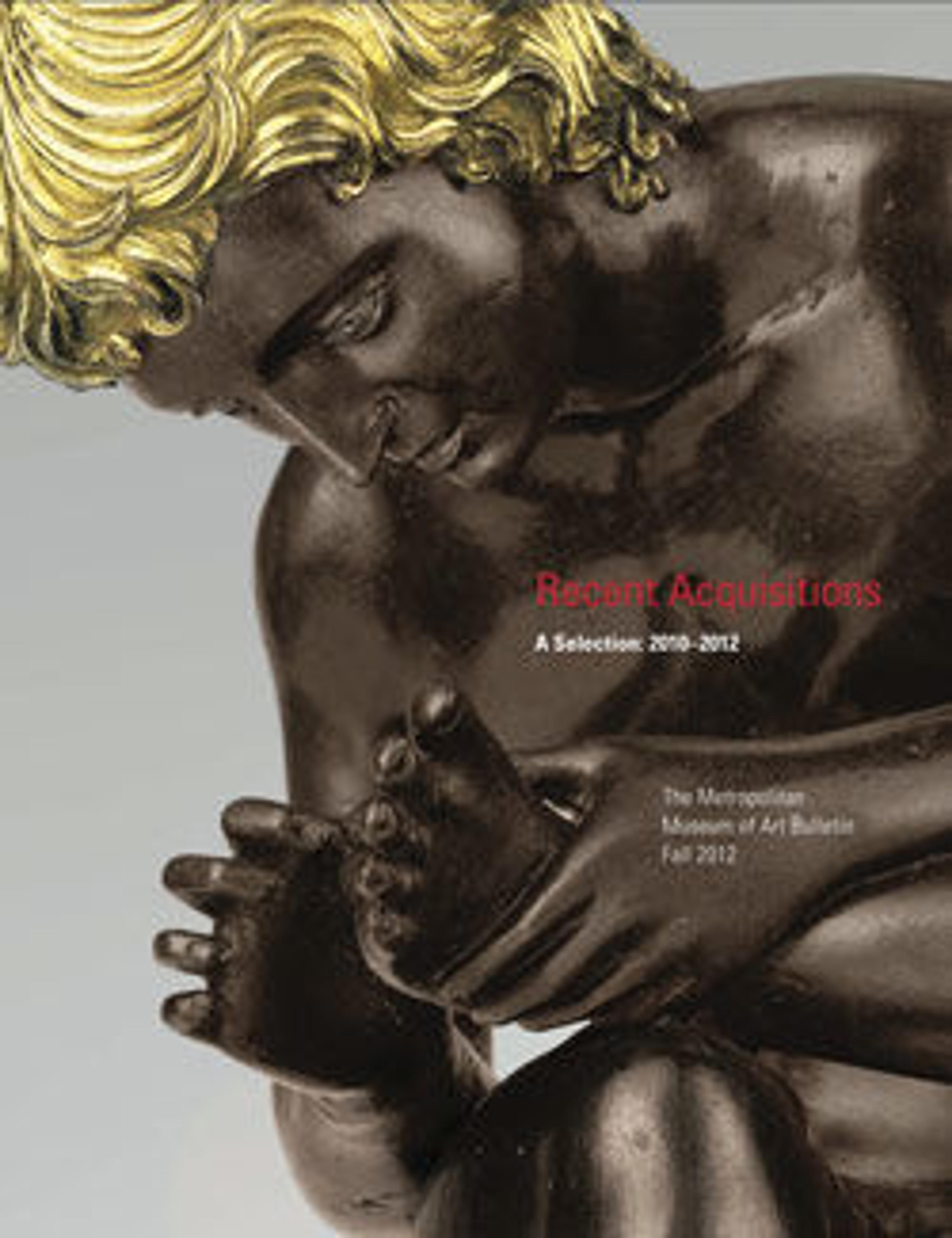Dish with long-tailed birds and hibiscuses
Several features help date this remarkable dish to the fourteenth century. Two birds circle one another playfully in a composition suited to the circular shape. The lush hollyhock blossoms, shown from multiple perspectives, have petals of different sizes that overlap to suggest depth. Long, narrow leaves fill at least three layers of carving, adding to the richness of the surface. The unworked dark background seen here is more commonly found in earlier carved lacquers.
Artwork Details
- 元 張成款雕漆剔紅綬帶秋葵紋盤
- Title:Dish with long-tailed birds and hibiscuses
- Artist:Attributed to Zhang Cheng (active mid-14th century)
- Period:Yuan dynasty (1271–1368)
- Date:mid-14th century
- Culture:China
- Medium:Carved red lacquer
- Dimensions:H. 1/8 in. (0.3 cm); Diam. 12 3/4 in. (32.4 cm)
- Classification:Lacquer
- Credit Line:Gift of Florence and Herbert Irving, in honor of James C. Y. Watt, 2011
- Object Number:2011.120.1
- Curatorial Department: Asian Art
More Artwork
Research Resources
The Met provides unparalleled resources for research and welcomes an international community of students and scholars. The Met's Open Access API is where creators and researchers can connect to the The Met collection. Open Access data and public domain images are available for unrestricted commercial and noncommercial use without permission or fee.
To request images under copyright and other restrictions, please use this Image Request form.
Feedback
We continue to research and examine historical and cultural context for objects in The Met collection. If you have comments or questions about this object record, please contact us using the form below. The Museum looks forward to receiving your comments.
